How to grow remontant raspberries?
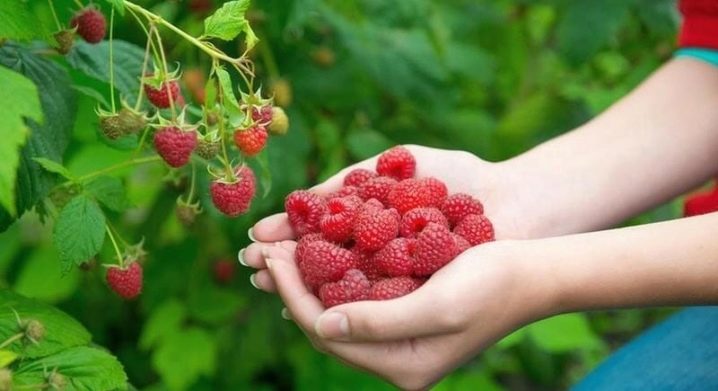
The repaired variety of varietal raspberries has been known for over 200 years. This feature of the berry plant was first noticed and used by breeders in America. The peculiarity of the remontant form is that the bushes give two harvests per season: the summer one is obtained on 2-year-old shoots, and the autumn one - on fresh, current year.
The harsh Siberian winters for a long time did not allow gardeners to breed raspberries in this region, but now new - frost-resistant - varieties have been developed that bear fruit twice a year.
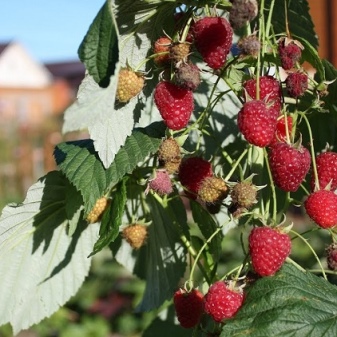
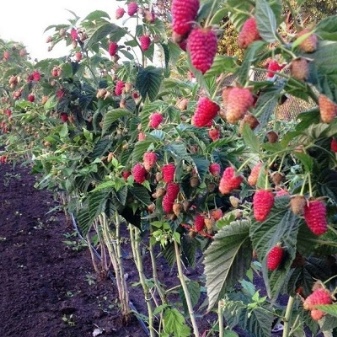
Where and when is it better to plant?
For planting remontant raspberries in open ground, they choose places protected from the north wind, well-lit by sunlight.... These can be covered with forest plantations or buildings, little shaded areas. Deep shade negatively affects the yield of the raspberry tree. Repairing varieties of berries love soil well fertilized with compost or humus, with the addition of a small amount of universal mineral fertilizers.
Humus is applied for planting in the amount of 1-2 buckets per 1 square meter, and a complex of fertilizers for the same area is provided in the amount of 200 grams. It is necessary to plant remontant raspberries in the spring before the start of the active growing season, while the sprouts are still dormant.
The results of planting remontant varieties in autumn are more successful. Planted in prepared and fertilized soil in September, they manage to take root before the onset of cold weather.

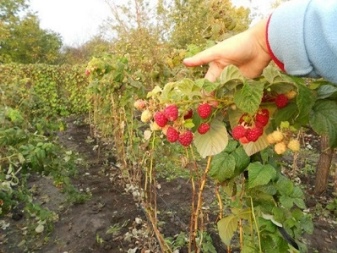
Landing technology
Planting methods for remontant raspberries are no different from planting conventional varieties... You can use a nesting scheme, in which all the seedlings are staggered in relation to each other, at a distance of 1 to 2 meters. When planting remontant raspberries, they adhere to the rule: there are no more than 2-3 plants per 1 square meter. Too frequent and thickened raspberry thickets will not give full-fledged harvests, since the shrub will constantly experience a lack of sun, heat and air.
When planting raspberries in spring or autumn, 1.5–2.0 meters are left between them in even rows, and 70–90 cm between the plants. So that the shrub does not grow in the aisles and it is easier to care for it, the sides of the rows at the root level are fenced with dense material : slate, thick roofing material or plastic shields. In this case, the layers of humus and drainage are at the bottom of the planting trenches.
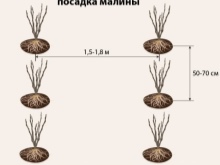
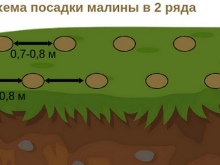
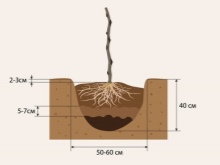
How to trim correctly?
Summer care measures for remontant raspberries include pruning off excess shoots, since if they all grow, the plant will be too thickened and will produce small berries in small quantities. In areas with mild climates and winters with little snow, spring pruning can be carried out, which should preferably be completed before bud break.
In late autumn, and best of all after the first snow falls, gardeners cut off the entire aerial part of the raspberry bushes. In cold climates, it makes no sense to grow two-year-old shoots, as they will freeze anyway. Later pruning dates enable plants to stock up on a large amount of nutrients before a long winter.
The cuttings must be collected from the raspberry patch, taken out of the garden and burned, and the ashes can be sprinkled around the bushes.
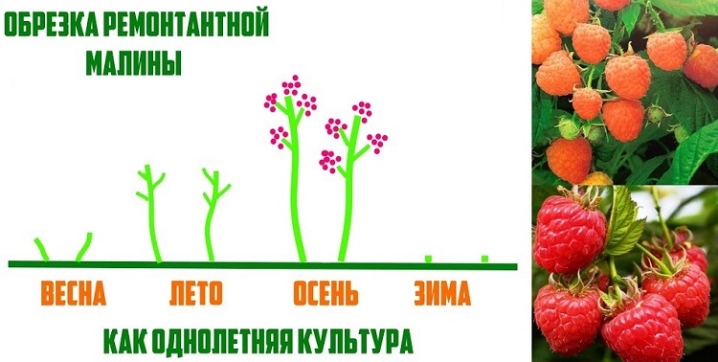
The nuances of watering and loosening
Raspberry responds to an excess amount of moisture by prolonged ripening of berries, a decrease in yield and its taste, but it still needs to be watered. Just like the usual types of raspberries, the remontant form responds well to timely watering during dry periods of summer or other seasons. The root system of the berry plant is located too close to the soil surface, so the crop reacts very quickly to fertilization and moisture. Loosening the soil around the bushes should not be too deep, so as not to damage many roots.
Raspberries feel great when mulching the root zone with peat or humus. These substrates help retain moisture in the ground and are useful fertilizers at the same time.
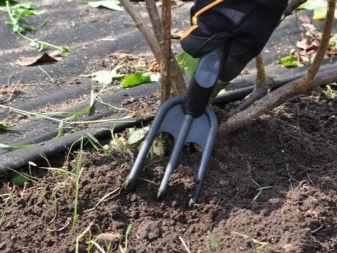

Transfer
In early spring, if it is necessary to multiply raspberries, transplanting it to a new place should be dealt with even before the beginning of the growing season and the blooming of the first leaves. The plants are carefully dug up, the shoots are cut off, leaving 3-5 buds above the level of the root collar, and transferred to a new place. Wells for seedlings with developed roots are prepared with dimensions of 50x50x50 cm, where a drainage layer of small stones, covered with humus or compost, is laid on the bottom.
The autumn period remains preferable for transplanting all forms of raspberry shrubs. Moreover, the time must be calculated in such a way that the plants have time to take root in a new place, and this, depending on the region, is the beginning or end of September.
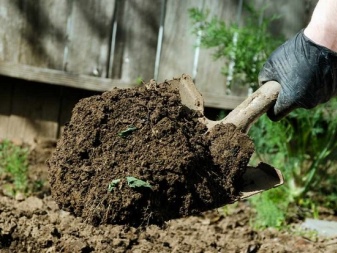

Top dressing
For the first time, remontant raspberries should receive fertilizing in the form of fertilizers, compost, peat or humus during planting of seedlings in a hole where a nutrient layer is already under the roots... All the soil on the site for laying the raspberry tree must be completely dug up 2-3 weeks before planting and scattered fertilizers in the form of humus from cow dung and hay must be added to it.
During the fruiting period, a sufficient amount of minerals obtained with moisture from the soil will give the plant good growth and accelerate the ripening of a bountiful harvest.

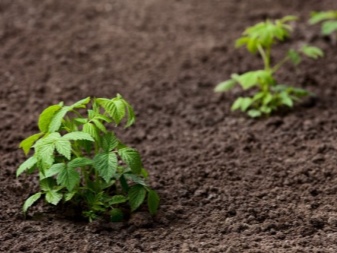
Required fertilizers
From the moment of planting on the site, raspberries constantly need feeding with various types of mineral fertilizers. They usually begin to be applied 2-3 years after planting the seedlings. Large and tall, remontant raspberries quickly make the soil poor in nitrogen, which is why it is so important to frequently replenish nitrogen consumption. In this regard, chicken manure is well suited, which should ferment for 1.5 weeks, and then diluted in the form of a concentrate with water 1: 20 for irrigation in the amount of 2-3 liters per 1 square meter.
Liquid fertilizing with organic fertilizers is the best way to maintain high yields and immunity of raspberries. Sometimes it is not a bad idea to apply the “Ideal” complex fertilizer, which contains a useful set of minerals.
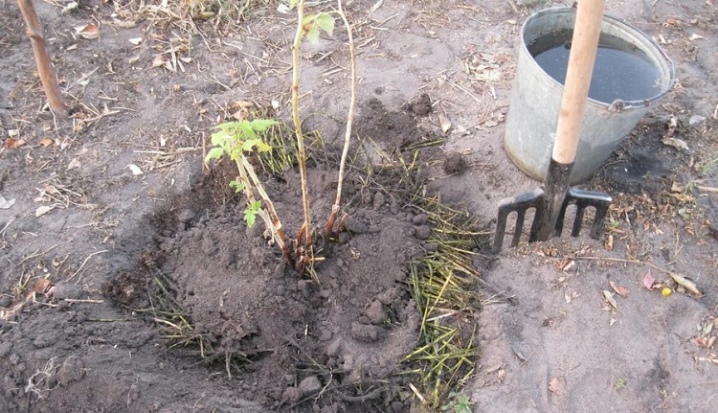
Timing
It is advisable to apply nitrogen fertilizers to the raspberry plot in the first half of summer. May and early June are the period when remontant raspberries are actively increasing their green mass and lengthening in height. The yield of the bushes and the size of each berry largely depend on the power of the shoots. You can water the plants with liquid organic matter until mid-July, you can feed it with a complex solution in August so that the bushes will recover for the second wave of the harvest. In the fall, the aisles are mulched with waste from the garden and garden in the form of hay and fallen leaves.
If there is straw, it is also good to spread it around the bushes in the fall, laying it on top of the humus.
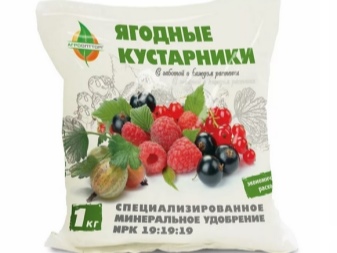

Tying
Tall and thin trunks of raspberries cannot withstand the weight of the crop, located mainly on the upper shoots, or are bent by the wind. In this case, the berries deteriorate from contact with wet soil, and the trunks of the bushes can break and damage neighboring plants. To prevent troubles, the berry culture needs a garter, which is produced before the plants enter the flowering phase.
As a support, you can use trellises made of wooden planks or wire stretched in 2-3 rows, since the first tying is carried out when new shoots reach a height of 0.5 meters, and the next - when the height of raspberry bushes is 1.5-2.0 meters ...
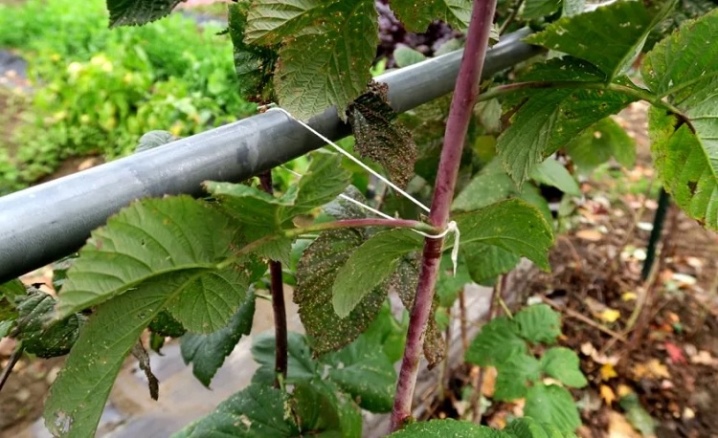
Wintering
To prepare for winter in temperate climates, the raspberry seedlings planted this year are not cut off, leaving shoots shortened to a height of 30 cm until spring. To obtain two harvests from the remontant raspberry bushes in the fall, all old and brown shoots must be removed. At the same time, it is necessary to ensure that they do not leave large hemp, which next year will turn out to be breeding grounds for diseases.
Only young and strong shoots remain for wintering, the tops of which are shortened from above by 15–20 cm. Some gardeners living in the northernmost regions and Siberia, because of the short summer, breed remontant raspberries to obtain one, but rather abundant harvest. Therefore, in cold regions, it is customary to cut off raspberries growing in the open field, just under the roots.
In all cases, pruning is done when the raspberry has completely lost its foliage.
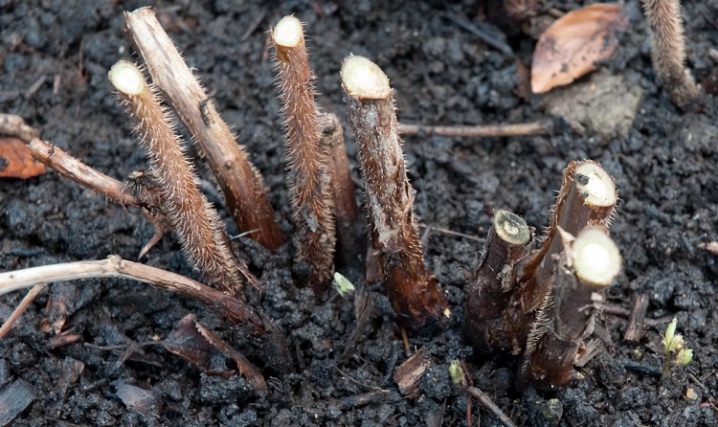
Diseases and pests
Among the common diseases of raspberry shrubs, white bloom on berries is most often found, which is often provoked by an abundance of moisture and a lack of sunlight.... In such cases, the shrub does not fully bear fruit. In this case, only a drainage outlet can be made, so that in case of heavy rains, the water leaves the site faster. If the reason for the appearance of various plaques or mold lies in the defeat of plants by fungal infections, then they must be treated with a solution of copper sulfate.
If raspberries bear fruit late or do not have time to ripen at all, being remontant, they may not have enough strength due to depletion of the soil - or they are weakened by diseases. Due to damage by pests in the final phase, the plant does not bloom, there are no ovaries on it. In early spring, it is helpful to spray your garden with common chemicals such as commercially available insecticides in ampoules and tablets. If the raspberries dry up, and the berries are mummified and do not ripen, it is possible that the plants have a damaged root system due to the fact that they were not preventively treated in the fall.
Due to the fact that remontant raspberries spend more energy on fruiting than ordinary berries, it must be maintained before wintering in order to have good harvests for the next year throughout the season. The first feeding is carried out in early autumn and consists of a potassium-phosphorus mineral complex. It has an effect on strengthening the roots and bark before the onset of cold weather. After 2 weeks, you can feed the plants with any complex fertilizer labeled "autumn". After another 10-15 days, the last feeding, consisting of ash, is carried out. So that pests do not remain on the bushes that will remain for the winter in the buds, bark or roots, they must be treated with chemical plant protection drugs. After the first few frosts, it is useful to shallowly dig up the soil around the raspberry so that all harmful microorganisms remaining in it die, and after a few days, cover the root zone with straw, hay or mulch.
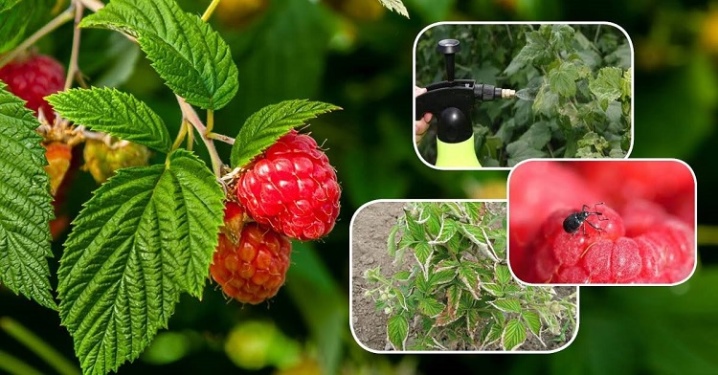
Reproduction methods
To preserve the varietal characteristics of remontant raspberries, especially hybrid varieties, it should be bred mainly with seedlings obtained from parts of adult plants. Breeding is usually carried out in several ways.
- By dividing the bush. When transplanting old bushes with branched shoots from the roots, they can be divided into several new ones and planted in another place.
- Cuttings... You can keep young shoots trimmed for the winter in sawdust with sand so that they sprout from the lower buds, or make layering from an adult bush to get cuttings with a root system.
- Root offspring. Raspberry bushes reproduce in nature by the offspring of their root system, spreading more to the sides than down.New shoots grow from them, which can be separated from the uterine rhizome and planted separately.

The nuances of growing in different regions
Despite the fact that caring for remontant raspberries differs little in agricultural technology from other types of this crop, there are still some features. They consist in ripening in one season of summer - autumn of the harvest on young branches that appeared in the current year. Therefore, after harvesting, when frosts come and the first snow falls, all shoots are cut very shortly. At the same time, in the household plots of frosty regions, in Siberia or the Urals, there is no need to drop in or bend down and cover annual branches with hay, like in ordinary raspberry varieties.
Growing frost-resistant varieties of remontant berry in a dacha somewhere in the middle lane or the Moscow region, gardeners can not fear for their harvest with recurrent frosts down to -3–5 degrees. The special shape of the raspberry withstands a slight drop in temperature even during flowering and ovary formation.
Almost all varieties of remontant raspberries are highly resistant to various diseases, but it is necessary to take care of them, as for any garden crops, so that the plants look healthy and give good yields of berries.

Useful Tips
Each gardener and gardener always has his own secrets in stock, inherited from the older generation or gained by their own practical experience. So, it was noticed that it is undesirable to plant raspberries in areas where nightshade crops grew before it: potatoes, tomatoes, eggplants.
An interesting way of planting raspberries solitary in separate tubs up to 10 liters in size... The bushes are planted one at a time in decorative containers, which are placed in a conspicuous place. Each plant is formed from 5-6 fruiting shoots and make sure that they do not grow. With this method of planting, the rhizomes warm up better, with a cold snap they can be brought into a shelter or greenhouse, and in warm weather they will decorate any corner of the house area with lush vegetation with red berries.
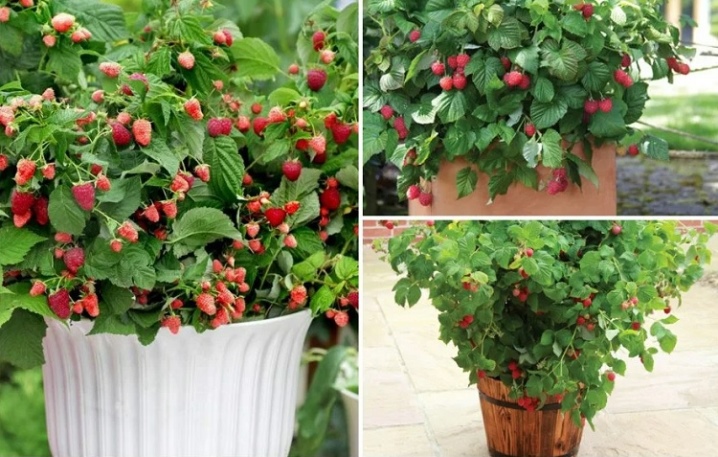











The comment was sent successfully.